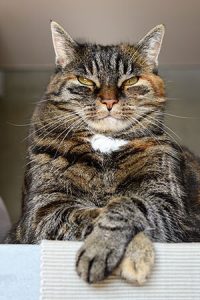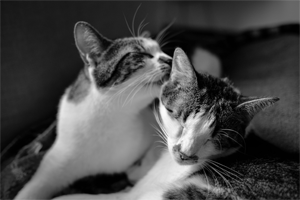Time to read: 6 mins
Pet insurance for older cats
Does the age of a cat matter for getting insurance?
Put simply, yes, it does.

Pet insurance for older cats is harder to find than for kittens or younger cats. It is the same case when insuring older dogs as well. This is because as an animal ages there more likely they are to need veterinary treatment and they become more prone to diseases.
Some insurers will only let you take out a new policy if your cat is under ten years of age. For specialist breeds and pedigrees you may find the age limit is even younger.
You’ll have to check your individual policy to make sure that your cat falls within the age limit. If you stay with the same insurance company, then you may find they will insure your cat throughout their life. We have no upper age limit for insurance, however the excess due on claims will increase after they reach 10 years old.
It is normally best to start looking for cat insurance while they are young. By doing this you can not only protect against accidents and illnesses that happen while you cat is young but you also won’t need have to worry about getting an insurance policy for the cat as they age. It becomes more difficult as they get older due to increased likelihood of them developing medical conditions.
Common conditions in older cats
Like humans, cats slow down as they approach their senior years. You may start to see some effects on their dental health, vision and hearing, while joint conditions like arthritis may also begin to affect their movement. In some cases older cats can even suffer with dementia.
The potential for suffering from diseases such as diabetes, cancer, kidney and liver disease also increases while thyroid problems can also be seen.
What’s the best pet policy for an older cat?
There are generally 4 types of pet insurance available to pet owners, ranging from accident-only up to lifetime insurance. As cats get older the more likely they are to become ill and generally the more serious those conditions tend to be. Due to this you might find that the most suitable cover is lifetime cat insurance which can pay out for treatment for the remainder of the cat’s life (so long as you renew the cover each year). With other levels of cover you may find that you’ll need to pay towards the cost of treatment or you may hit cover limits for treatment which render the condition as pre-existing and therefore no longer being able to be claimed for.
Are pedigree cats more expensive to insure?
Generally, pedigree cats such as Bengals and Siamese are more expensive to insure. This is because they are more susceptible to inherited diseases which non-pedigree cats are more likely have built an immunity against.
What does insurance not cover?
Generally pet insurance does not cover existing medical conditions so policies taken out after the onset of illness won’t be valid.
Therefore, you might want to get insurance for your cat as soon as possible when they are young and healthy, especially if you have a breed that is more likely to suffer problems and diseases in the long term.
Many policies also won’t cover routine or preventative treatments, such as vaccinations, flea and worm prevention, neutering/spaying, grooming, and anything relating to pregnancy.
Always check
There are many providers out there and naturally the cover varies by insurer so always make sure you check the policy wording thoroughly so that you can understand what you are buying and can be confident that the cover is right for you and your pet.











